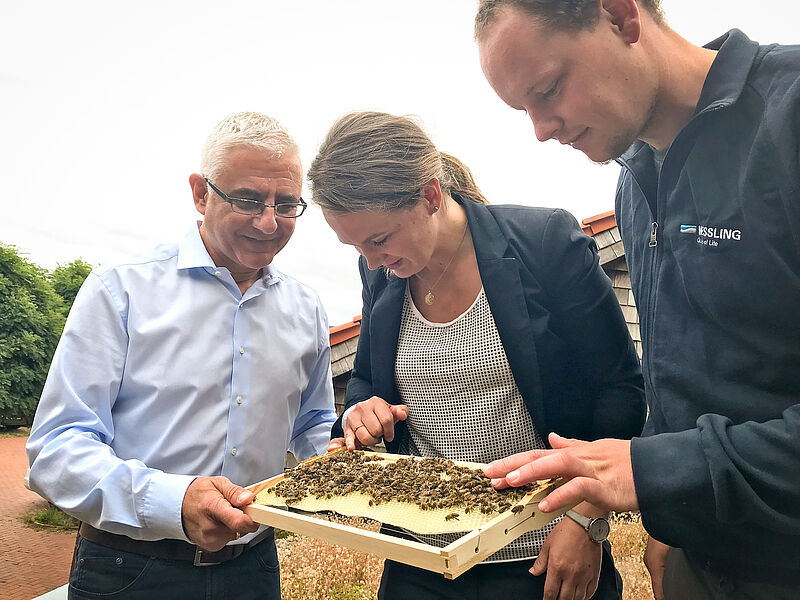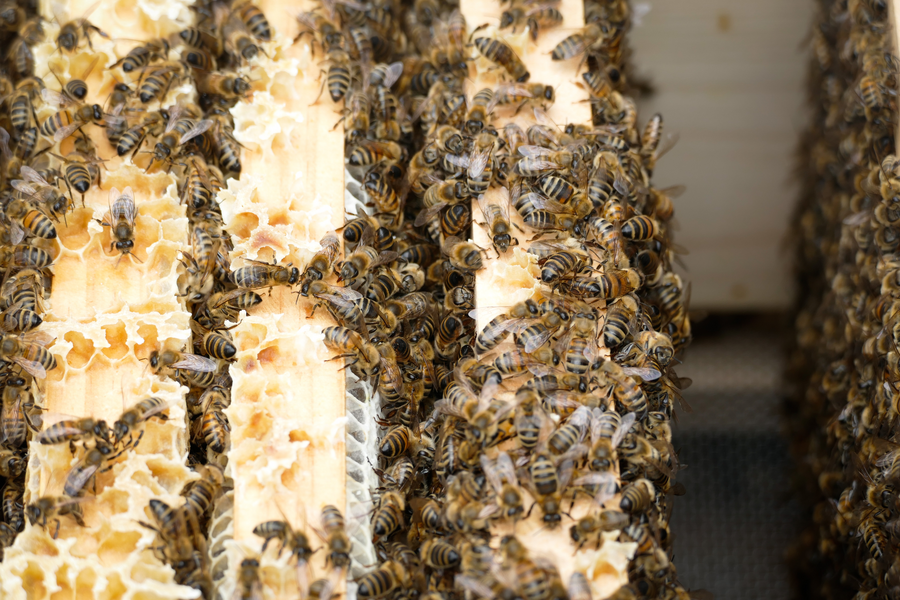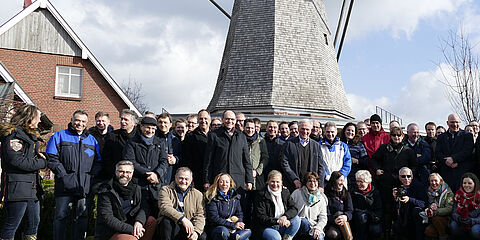WESSLING bets on bees
With a beehive located at the company headquarters in Altenberge, WESSLING is setting another example for environmental protection and the preservation of biodiversity.

It is so inconspicuous that it is easy to miss. We are talking about the first WESSLING beehive at the company’s headquarters in Altenberge.
For many years, in their spare time, some employees of the family-run company have been beekeeping. To share their passion with the entire WESSLING Group and to let them profit from it, they have introduced their hobby to their workplace.
Jannis Drakidis, business unit manager and expert, built up the beehive at the company headquarters in Münsterland with one of his bee colonies. He receives support for the active care of the hive from family entrepreneur Anna Weßling and project manager Christopher Bocker.
Once a week the colleagues look after the bees, for example, by hanging small wooden partition frames into the hive. These frames contain wax plates with pre-embossed honeycomb cells that help the bees to fill up the honeycomb cells more quickly.
The combs are both a "pantry" and a brood cell: they are either filled with honey, or pollen, or the queen bee lays eggs within them. These eggs develop progressively into larvae which are fed by so-called "nurse bees" with a mixture of honey and pollen. After a certain time, the honeycomb cells are covered with a layer of wax and the larvae inside develop into bees. A few days after hatching, the young bees take over tasks in the hive themselves and support the development of the colony. Thus the bee colony grows and develops continuously.

“Anna Weßling and Christopher Bocker both possess a calm and serene nature - they are literally made for the activity of beekeeping", Jannis Drakidis comments enthusiastically. Bees are sensitive towards excitement, stress or time pressure and they can react accordingly.
In addition to peace and quiet, the so-called "smoker" also helps to distract the bees. However, the smoke does not have the generally assumed " numbing " effect. Rather it causes the diligent bees to concentrate completely on collecting the honey and not on the beekeeper. This reaction is due to the fact that bees naturally build their honeycombs in tree hollows. If the tree catches fire, it would probably result in the destruction of the hive. By collecting the honey, the bees, thereby, save as much food as possible for the reconstruction of the hive.
This is Jannis Drakidis’ seventh beehive since 2011. Even as a child, he was fascinated with bees and beekeeping. At that time it was his grandfather who introduced him to the insects. In the meantime, he has become an expert in the field: with great passion and several anecdotes, he explains how the bees live and work. He is often invited to show groups of children the tender little creatures and thus transfers his fascination to the next generation.
The bee project grew from the enthusiasm of the beekeeping colleagues, but in times of climate change and insect mortality it is all the more important to WESSLING: “With this initiative we are currently not pursuing the goal of harvesting the honey. Rather, we are committed to the preservation of biodiversity and WESSLING is setting another example in the direction of environmental protection," said a happy Anna Weßling.
Your contact
- Pia Hustert
- +49 2505 89-0
- pia.hustert@wessling.de



